MARIANI’S
Virtual Gourmet
DECEMBER 27, 2015
NEWSLETTER
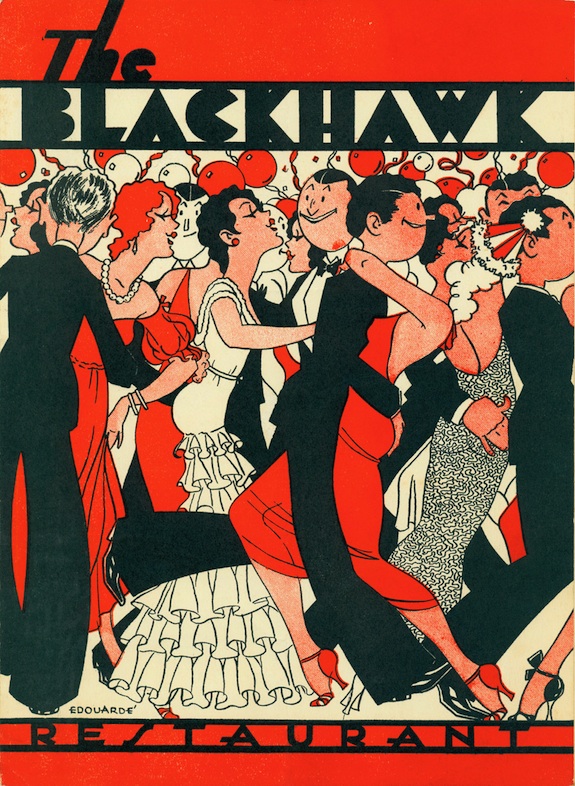
HAPPY
NEW YEAR!
IN THIS ISSUE
NEW ORLEANS, Part Three
By John Mariani
NEW YORK CORNER
33 REASONS WHY NEW YORK
IS AMERICA'S BEST FOOD CITY
By John Mariani
NOTES FROM THE WINE CELLAR
CHARLES HEIDSIECK CHAMPAGNE
CAREFULLY CLIMBS BACK TO THE TOP
By John Mariani
❖❖❖
NEW ORLEANS, Part Three
By John Mariani
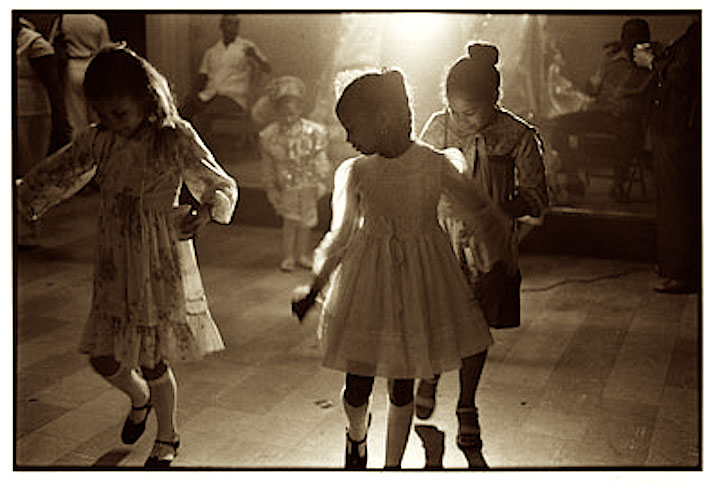
"Mademoiselles Dansant" (1978) by Owen Murphy, Jr.
As
has been noted everywhere, there are now more
restaurants in New Orleans than before Hurricane
Katrina hit the city a decade ago, although not all
are of a stellar stripe. Two new ones that have
distinguished themselves show not only the
resilience of the restaurant sector but of a
continual evolution within it.
SHAYA
4213 Magazine Street
504-891-4213
shayarestaurant.com
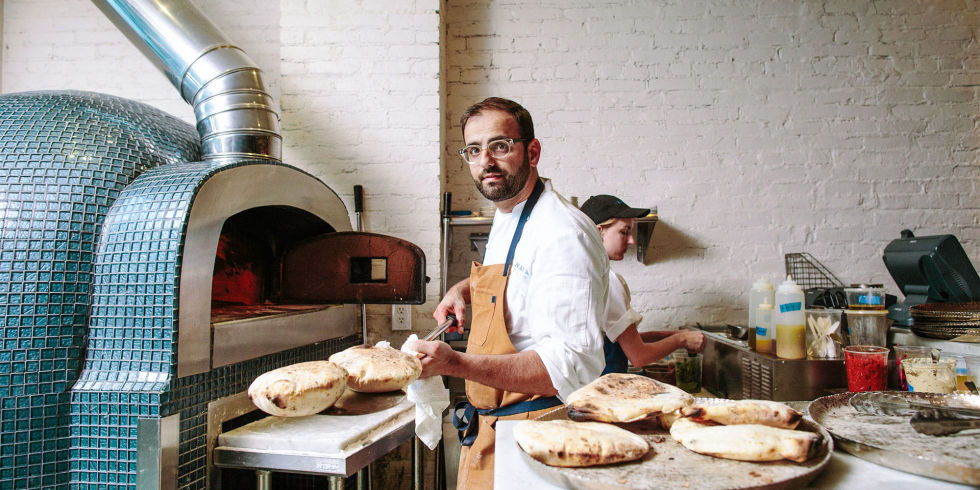
I think
I’m on safe ground in asserting that New Orleans
is not a hotbed of modern Israeli cuisine, so the
opening of Shaya by Israeli Chef Alon Shaya
(with partner John Besh) marks a singular moment
in the city’s post-Katrina history, showing the
kind of fresh new thinking and flavors the city
needs. Shaya describes his food as “a grand
mosaic, drawing influence from North Africa, the
Middle East, Eastern Europe, Turkey and Greece,”
which is very true of contemporary cuisine in
Israel, which bears no resemblance to the largely
eastern European food of New York Jewish culture.
At the same time
Shaya draws happily on the bounty of ingredients
indigenous to Louisiana and the Gulf, working
closely with the Crescent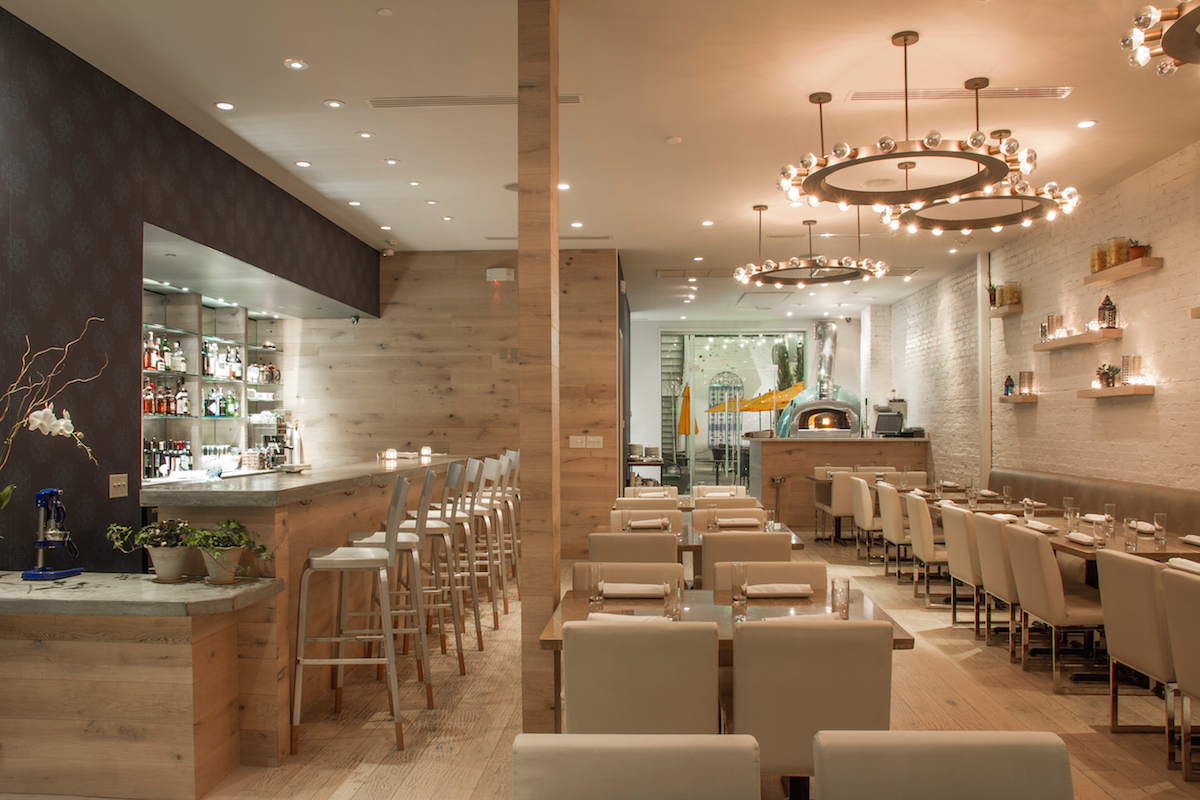 City Farmer’s Market,
as he had at Domenica and Pizza Domenica. So he
knows his way around a pizza oven, put to good use
at Shaya to make wonderful, smoky pita bread that
comes to the table quickly, all the better to scoop
up eggplant baba
ganoush, a tabouleh
of barley and parsley with red onion, toasted almond
and preserved lemon. Lutenitsa
is a Bulgarian purée of roasted peppers, eggplant,
garlic and tomato, while roasted okra comes with red
onions, very creamy tahini, and a sesame spice.
Three of these items go for a modest $15, five for
$23.
City Farmer’s Market,
as he had at Domenica and Pizza Domenica. So he
knows his way around a pizza oven, put to good use
at Shaya to make wonderful, smoky pita bread that
comes to the table quickly, all the better to scoop
up eggplant baba
ganoush, a tabouleh
of barley and parsley with red onion, toasted almond
and preserved lemon. Lutenitsa
is a Bulgarian purée of roasted peppers, eggplant,
garlic and tomato, while roasted okra comes with red
onions, very creamy tahini, and a sesame spice.
Three of these items go for a modest $15, five for
$23.
Among the
small plates to be shared is halloumi
with chanterelle mushrooms and blueberry vinaigrette
($20), as well as a juicy grilled lamb kebab with
more tahini, more tomatoes and fragrant cilantro
($16).
And,
if the soul ever actually needs warming in New
Orleans, there is a golden matzoh ball soup with
slowly cooked duck, greens and a variety of herbs
($11). There is also a section just for hummus,
including an unusual one of lamb ragù with
pinenuts and peas ($14). Also there is a section of
sandwiches, and we really enjoyed the chicken
schnitzel with sesame-enriched challah bread and harissa-spiked
mayonnaise
and shaved pickles ($16).
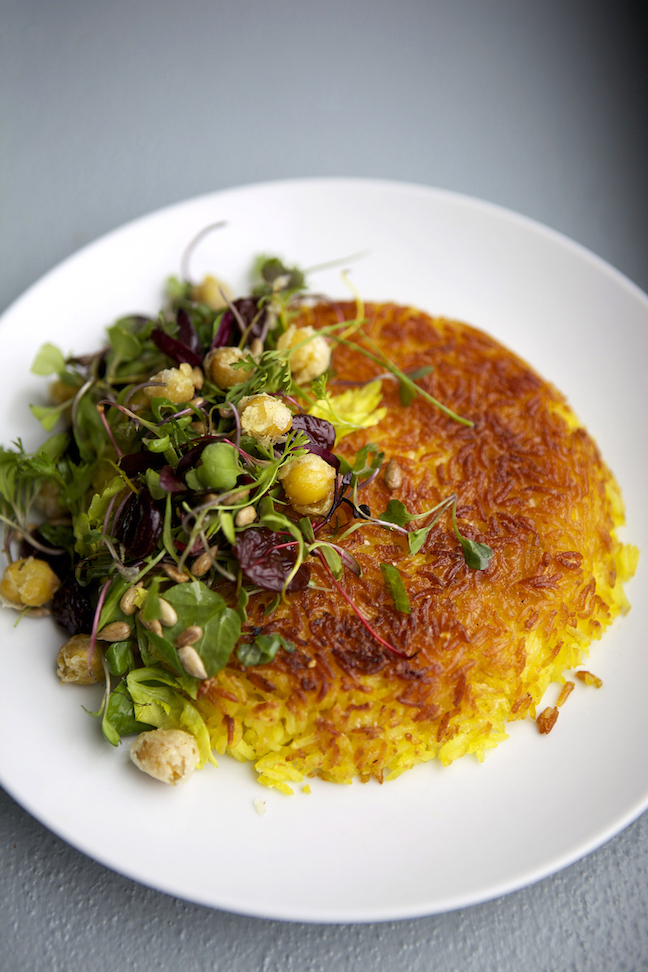 Most
every item I tasted had an amazing depth of flavor,
buoyed by various creamy and chewy textures in
vibrant colors.
This carried over into desserts ($9) like malabi, a
vanilla custard with cherry, rose, and coconut
macaroons. Milk and honey is a very creamy
cheesecake with mixed nuts granola, burnt honey ice
cream.
Most
every item I tasted had an amazing depth of flavor,
buoyed by various creamy and chewy textures in
vibrant colors.
This carried over into desserts ($9) like malabi, a
vanilla custard with cherry, rose, and coconut
macaroons. Milk and honey is a very creamy
cheesecake with mixed nuts granola, burnt honey ice
cream.
The long, very sunny room, well
lighted in tones of beige, with white brick and
bleached wood, is just made for guests to share
everything, so fortunately the food comes out fairly
quickly, because, I promise you, your appetite will
only build as the plates hit the table.
Compère
Lapin
Old No. 77 Hotel & Chandlery
535 Tchoupitoulas Street
866-226-4727
www.old77hotel.com
The new Old No. 77 Hotel & Chandlery
was once an 1854 warehouse, so the developers,
Provenance Hotels, have kept its rustic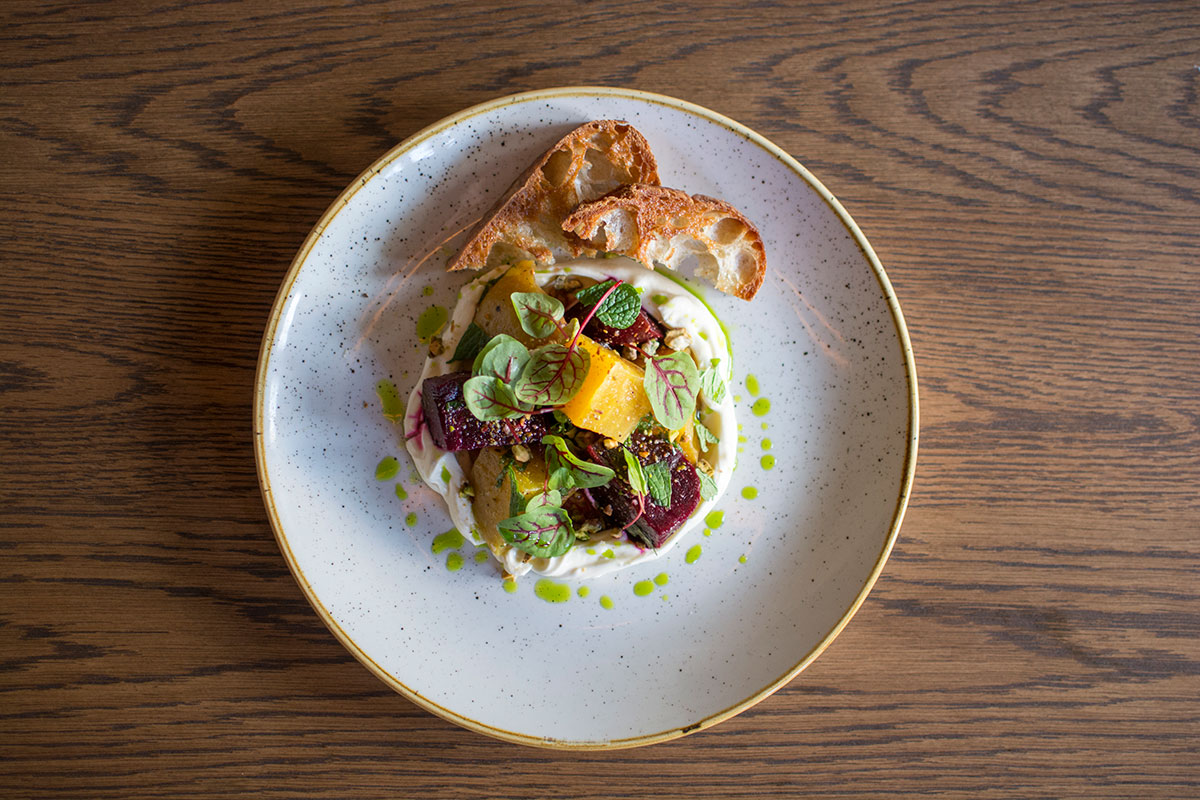 charms of hard wood
floors and exposed brick walls throughout,
including inside Compère Lapin, where the
inventive chef Nina Compton (formerly of Scarpetta
in Miami) has been at work since June.
charms of hard wood
floors and exposed brick walls throughout,
including inside Compère Lapin, where the
inventive chef Nina Compton (formerly of Scarpetta
in Miami) has been at work since June.
St. Lucia-born Compton (below) had
fallen in love with the city while competing on that
endless TV series “Top Chef,” where she was
runner-up, so she was delighted to be offered the
job at a place that allows her to flex her talents
for French, Mediterranean and Caribbean Creole
flavors.
It’s a big room, and when I
visited the management admitted it had misjudged the
crushing noise level of the brick-walled room with
cement floors and wooden tables. I have since been
told that some of the noise has been reduced by
baffling.
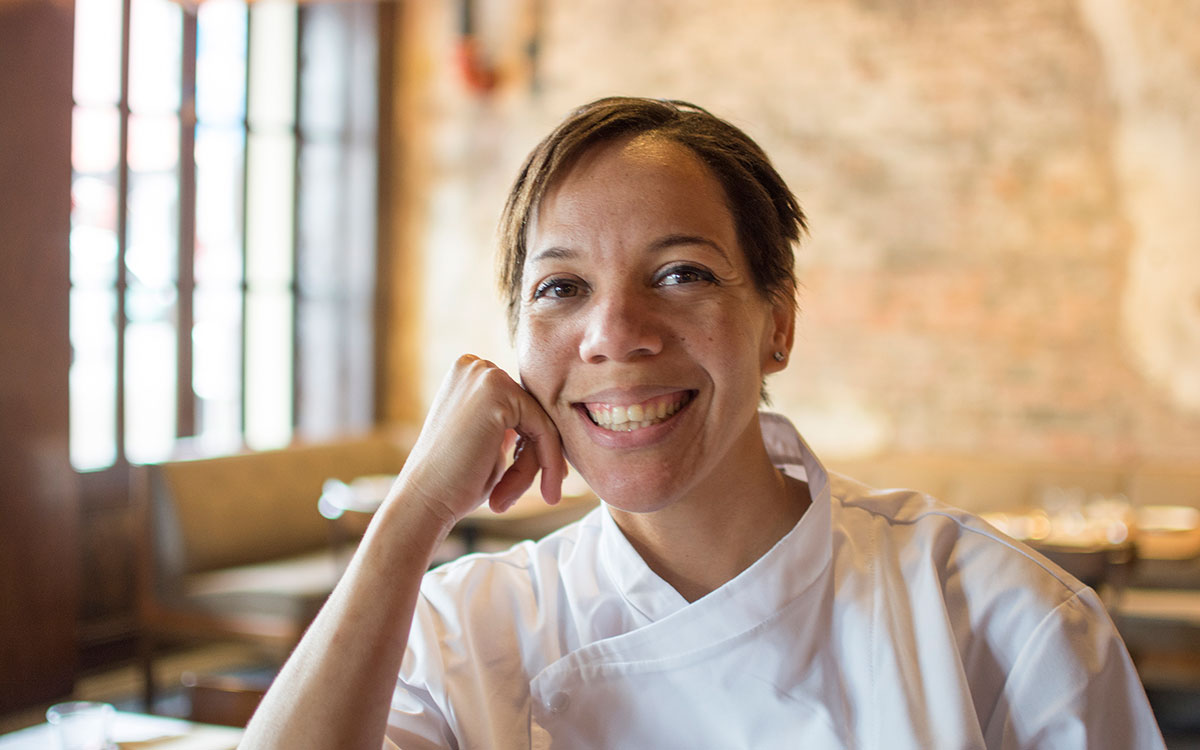 The
menu begins with “small bites” that on my visit
included a rich, hot cheese fonduta
with surprisingly tasty Australian truffles. Spiced
smoked pig ($5) was way too smoky,
but the crispy dirty rice with the sour orange mojo
($5) was pretty darn delicious.
The
menu begins with “small bites” that on my visit
included a rich, hot cheese fonduta
with surprisingly tasty Australian truffles. Spiced
smoked pig ($5) was way too smoky,
but the crispy dirty rice with the sour orange mojo
($5) was pretty darn delicious.
Among the first courses was an
amberjack crudo
with anise-like fennel and tangy oranges ($13) that
was welcome and very refreshing on a warm night, and
marinated shrimp with roasted jalapeño jus ($13)
also showed how well Compton knows how to prepare
seafood at just the right moment.
Next
came the “second” courses, of which the curry goat
with plantains gnocchi and
toasty
cashews was absolutely outstanding ($23), and so was
pici pasta
with lobster and summer squash 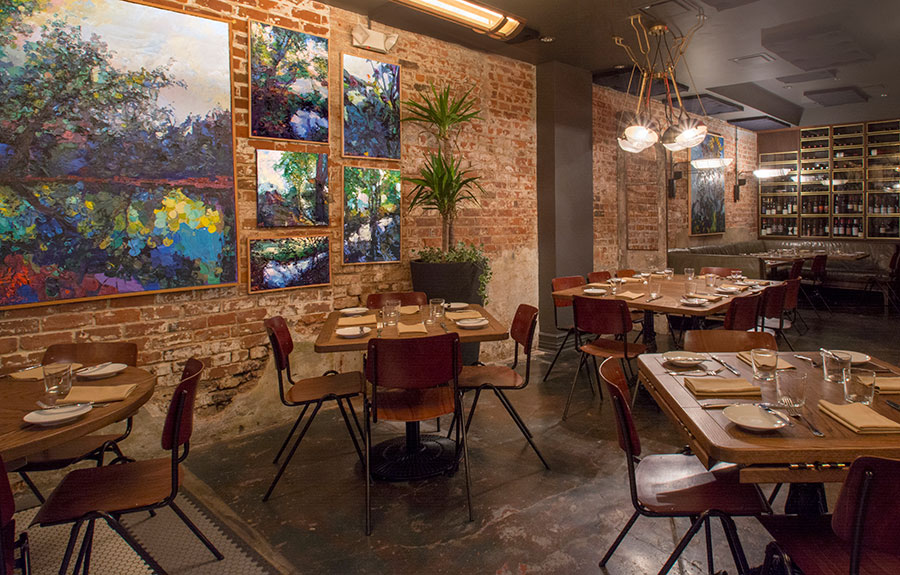 ($25),
although the pasta itself was overcooked that
evening, a condition that also marred some otherwise
fine semolina gnocchi
with sweet corn ($7).
There was a delectable duo of beef with
chickpeas ($33) that had some cold foie gras shaved
over it, which made for an oddly generous garniture
indeed, especially since there was no foie gras
elsewhere on the menu.
($25),
although the pasta itself was overcooked that
evening, a condition that also marred some otherwise
fine semolina gnocchi
with sweet corn ($7).
There was a delectable duo of beef with
chickpeas ($33) that had some cold foie gras shaved
over it, which made for an oddly generous garniture
indeed, especially since there was no foie gras
elsewhere on the menu.
I was very impressed by pastry
chef Danny Alas’s coconut tres leche
with whipped cream and coconut tuile
($8); roasted banana with hot zeppolo
fritter, rum caramel ($9), and horchata-flavored
panna cotta
with a melon salad and melon sorbet ($9). Among New
Orleans’s chocolate cakes, the doberge cake
with lemon curd and chocolate ice cream ($10) needs
some refining.
Compère
Lapin—named after a mischievous rabbit of Caribbean
folklore—has, like Shaya, been a big hit since it
opened, as much talked about for Compton’s TV
celebrity as for the restaurant’s hip, youthful
ambiance. But
Compton has already proven herself a break-out chef
in town, someone every other chef is keeping a
curious eye on.
Open for
lunch Mon.-Fri.; brunch Sat, & Sun., dinner
nightly.
❖❖❖
IS AMERICA'S BEST FOOD CITY
By John Mariani
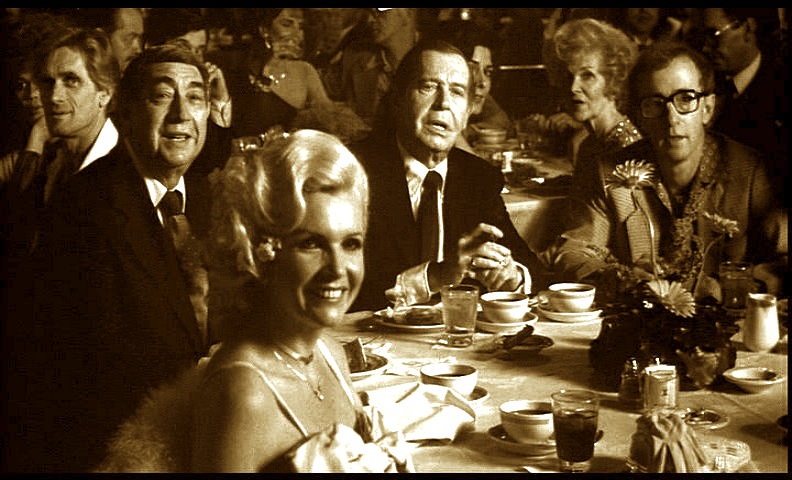
"Broadway Danny Rose" (1984)
I wouldn’t say the ground shook, but when my
friend and colleague, long-time Washington
Post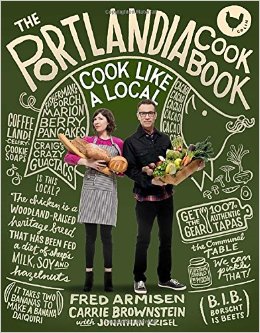 food critic Tom Sietsema,
recently declared Portland, Oregon, to be
America's best food city among ten ranked,
Facebook and the food media’s collective
eyebrows shot through the roof, followed by a
good deal of sputtering derision.
food critic Tom Sietsema,
recently declared Portland, Oregon, to be
America's best food city among ten ranked,
Facebook and the food media’s collective
eyebrows shot through the roof, followed by a
good deal of sputtering derision.
Sietsema says he ate, drank and shopped at 271 “restaurants,
bars,
food stores and farmers markets” in 60 days--that
works out to a dyspeptic 4.5 per day and suggests
an expense account overload that perhaps only the
Post’s new owner, Jeff Bezos, could float
(although Amazon’s founding city, Seattle, didn’t
even make the cut).
In Portland Sietsema “relish[ed] the
abundant quirks: lines for (stellar) breakfasts,
even midweek, and strip clubs inclusive enough to
offer vegan fare,” along with raspberry milkshakes
and Walla Walla onion rings, while admitting that
fine dining in Portland is as rare there as Maine
lobsters.
To each his own, but for Sietsema to rank New York
at number 8 on his list is nothing short of an
astonishment, as if he’d said Marseilles was
France’s best fashion city, or Pisa was the center
for Italy’s auto industry. Of NYC he writes, “New York just has
more, not better. I found some egregious examples
of what was called 'fine dining' there that were a
huge rip off," though his three-dollar hot dog at
Gray’s
Papaya made “a lasting impression.”
Let me count the ways in which NYC reigns supreme
as America’s greatest food city, where:
• There
have been more master chefs whose influence has
been greater than anywhere else, including
Jean-Georges Vongerichten, the late Gilbert
Lecoze, André Soltner, Wiley DuFresne, Larry
Forgione, Daniel Boulud, Michael White, David
Bouley, Dan Barber, Mario Batali, Alfred Portale,
David Chang,
et al.
 • There have been more
restaurateurs whose influence has been greater
than anywhere else, including John Delmonico, Pio
Bozzi and John Ganzi, Joe Baum, George Lang, Nick
Valenti, Sirio Maccioni, Warner Leroy (left), Keith
McNally, Charles Palmer, Tony May, Danny Meyer,
Buzzy O’Keefe, Alex von Bidder, and Drew
Nieporent.
• There have been more
restaurateurs whose influence has been greater
than anywhere else, including John Delmonico, Pio
Bozzi and John Ganzi, Joe Baum, George Lang, Nick
Valenti, Sirio Maccioni, Warner Leroy (left), Keith
McNally, Charles Palmer, Tony May, Danny Meyer,
Buzzy O’Keefe, Alex von Bidder, and Drew
Nieporent.
• The
first restaurant opened in America
(1831)—Delmonico’s (below)—and it’s still thriving.
The Delmonico steak, Eggs Benedict, Lobster
Newberg and many other dishes were created here.
Samuel F.B. Morse sent the first cablegram across
the Atlantic from a table at "Del's," and in 1868
the restaurant gave the stamp of approval to the
idea of women dining unaccompanied by men,
which created the "ladies lunch."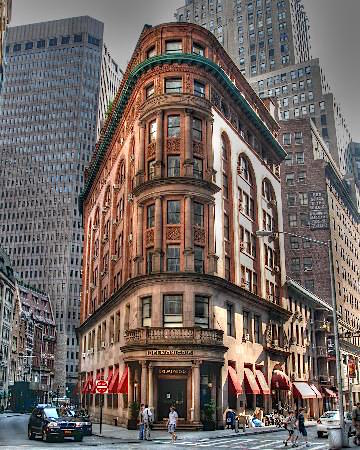
• The
first pizzeria in America—G. Lombardi’s in the
Village, still going strong on Spring Street.
• There are,
for what they’re worth, more Michelin stars than
any other American city--77, with six awarded
three-stars; Chicago has 22 total, San Francisco
50, including wine country restaurants--and eight
of the San Pellegrino "100 Best Restaurants
in the World." (The
Michelin Guides do not cover Portland, OR.)
• More
promising cooks studied and staged before gaining
national reputations as eminent chefs
elsewhere—not least as graduates from the kitchen
of Le Cirque, whose alumni include Daniel Boulud,
David Bouley, Terrance Brennan,
Alain Sailhac, Rick Moonen, Jacques Torres, Sottha
Khun, Sylvain Portay, Michael Lomonaco, Alain
Allegretti, Pierre Schaedelin, Bill Telepan, Alex
Stratta, Geoffrey Zakarian, et al.
• There
are more notable woman chefs, including Zarela
Martinez, April Bloomingfield, Gabrielle Hamilton
(left),
Daniela Soto-Innes, Lauren DeSteno, Melissa
Weller, Angela Dimayuga, Ann Redding, Anita 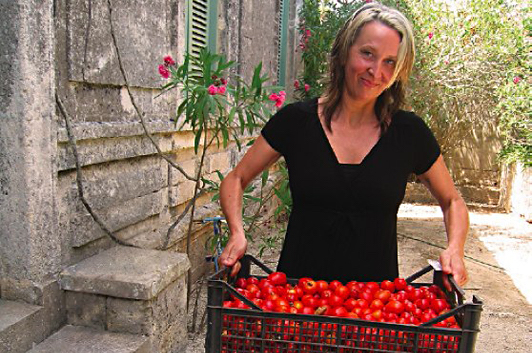 Lo, et al.
Lo, et al.
• Not
just one
Little Italy, in Manhattan, but another in
Brooklyn, and—the best of all—Arthur Avenue, in
the Belmont section of the Bronx.
• Italian-American
cuisine was born in the kitchens of the millions
of southern Italians who immigrated to NYC from
1880 to1920; so-called “Northern Italian Cuisine”
was pioneered at places like Romeo Salta, Il Nido,
Parioli Romanissimo, Il Monello, Orsini's,
Gianmarino, and Il Menestrello. White
truffles were first introduced at Barbetta. The
first upscale Italian groceries were in NYC,
including Balducci’s and the Arthur Avenue Food
Market. The first EATaly outpost was also here.
Dishes like melon and prosciutto, penne alla
vodka, spaghetti alla Caruso, shrimp scampi, steak
pizzaiolo, veal parmigiana, spumoni, Italian ices,
and lobster fra diavolo became Italian-American
standards for menus both in the U.S. and Europe.
• Not
just one
Indian food neighborhood—“Curry Hill” in
Manhattan—but many flourish, especially in Queens,
along with America's largest Chinatown, Korean
grocers everywhere, Russians in Little Odessa,
Ukrainians and Uzbeks in Brooklyn, Haitians in
Flushing, Dominicans in Washington Heights,
Chino-Latino in Cuban neighborhoods, and every
other kind of food culture imaginable.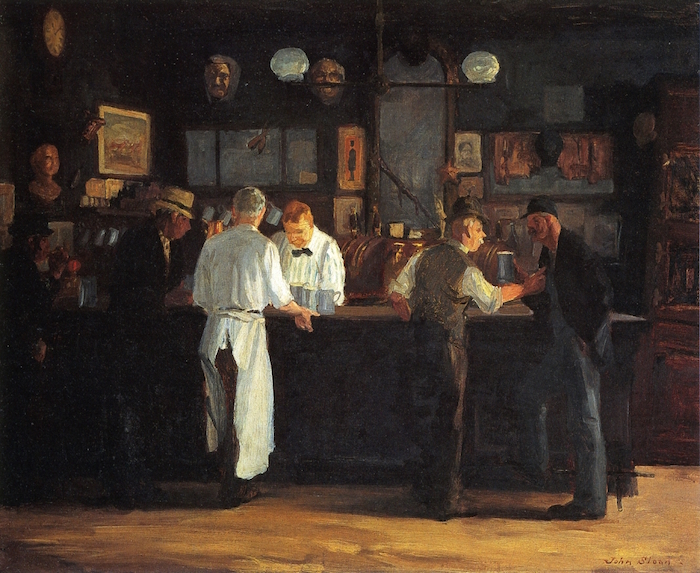
• Many
of the most legendary saloons in America reside in
New York, including P.J. Clarke’s, McSorley’s Old
Ale House (right),
the White Horse, the King Cole Bar, ‘21’ Club Bar,
the Blue Bar, the Oak Bar, the Landmark Tavern and
Pete’s Tavern.
• Hunt’s
Point Terminal Market in the Bronx stretches across 113 acres and
is the largest food exchange in the world, with
50+ merchants,
10,000 employees, sales of more than $2.4
billion a year, catering to more than 22 million
people worldwide.
•
Citymeals-on-Wheels began in NYC in
1981, last year delivering 2 million
nutritious meals to more than 18,000 frail, aged
citizens in every borough of New York. In
addition, nearly 19,000 volunteers collectively
spent 67,397 hours visiting and delivering meals
to their neighbors.
•
More notable New York eateries are in
movies and TV shows than anywhere else, including
Hollywood.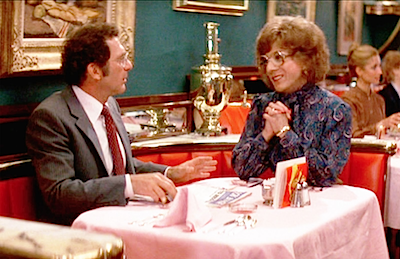 To name a very few: P.J.
Clarke’s, `21’ Club, Luigi’s, The Russian Tea Room
(left),
Minetta Tavern, Carnegie Deli, Katz’s, Elaine’s,
The Modern, The Rainbow Room, The Stage Deli,
Delmonico’s, Café des Artistes, Capsouto Frères,
Chumley’s, Il Cantinori, Tavern on the Green,
Market Diner, Café Carlyle, the Oak Bar, Raoul’s,
Serendipity 3,
and many more.
To name a very few: P.J.
Clarke’s, `21’ Club, Luigi’s, The Russian Tea Room
(left),
Minetta Tavern, Carnegie Deli, Katz’s, Elaine’s,
The Modern, The Rainbow Room, The Stage Deli,
Delmonico’s, Café des Artistes, Capsouto Frères,
Chumley’s, Il Cantinori, Tavern on the Green,
Market Diner, Café Carlyle, the Oak Bar, Raoul’s,
Serendipity 3,
and many more.
• The
most fine dining restaurants—every one packed
every night, despite the foodie media saying fine
dining is dying—are in NYC, including Gotham Bar
& Grill, Eleven Madison Park, Le Bernardin,
Masa, Per Se, Del Posto, Marea, Daniel, Aureole,
Lincoln Ristorante, Gramercy Tavern, La
Grénouille, Gabriel Kreuther, Bouley,
Jean-Georges, more than all other major USA
cities combined.
• The first
delis, where Jewish-American food was born, and
bagels, knishes, the Reuben sandwich, blintzes,
pastrami, bialys, and other dishes became NYC
standards. (To this day, it is impossible to get a
good bagel outside of NYC, with the exception of
one or two spots in L.A.)
Both Jewish
and Italian cheesecakes were perfected in NYC.
• The
Manhattan, the Cosmopolitan (right), Long
Island Iced Tea, the Bloody Mary,
the Rob Roy, and the Daiquiri were
introduced to America in New York.
• Where,
as in Napa and Sonoma Valleys north of San
Francisco, there are 25 wineries in the Hudson
Valley and 50 on Long Island within two hours’
drive north of the city.
• Hot
dogs were, if not created in NYC, first promoted
in Coney Island at Nathan's.
• Chocolate
fondue
was created at Chalet Suisse.
• Pasta
primavera was created at Le Cirque, which also
made crème brûlée an international staple dessert.
• France's la
nouvelle cuisine landed in NYC
restaurants like Dodin Bouffant, La Tulipe, The
Palace, Le Plaisir, The Quilted Giraffe,
and others.
•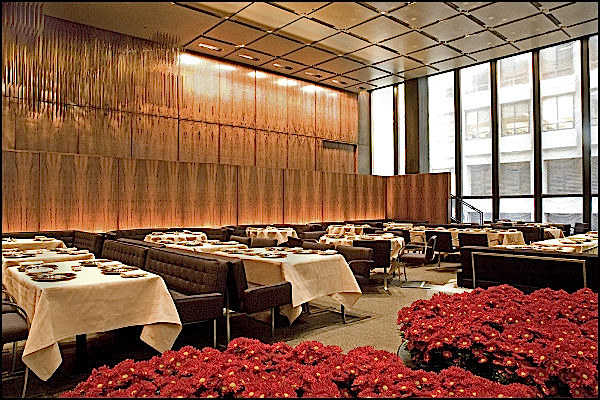 The
Power Lunch was established at The Four Seasons
Grill Room (left)
and The Power Breakfast at the Loews Regency
Hotel.
The
Power Lunch was established at The Four Seasons
Grill Room (left)
and The Power Breakfast at the Loews Regency
Hotel.
• The
singles’ bar was born at places like Maxwell’s
Plum, Yellowfingers, O’Neal’s Balloon, The Ginger
Man, and T.G.I. Friday.
• Although
invented
in Philadelphia, the Automat had its greatest
success and influence in NYC.
• Japanese
negimaki was created at Nippon, and Rocky Aioki
opened the first 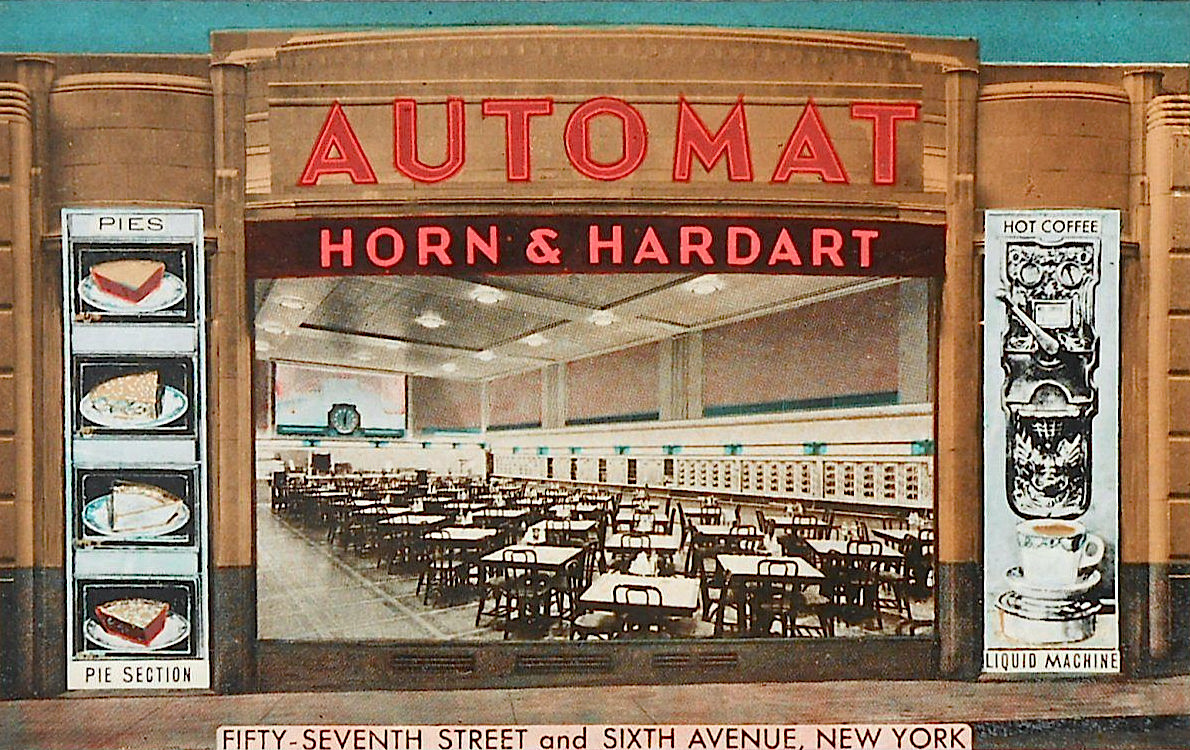 Benihana
of Tokyo teppanyaki concept here.
Benihana
of Tokyo teppanyaki concept here.
• Szechwan and Hunan cuisine were introduced at
places like Shun Lee Palace, Uncle Tai's, and
Peng's, which introduced Gen. Tsao's chicken to
America.
• The
template for the New York-style steakhouse was
created at Palm, Christ Cella, Pietro’s, Peter
Luger, Bruno’s Pen & Pencil, and Spark’s. Every
steakhouse in America now copies them.
• The
template for French restaurants was set at the
1939 New York World’s Fair at Le Pavillon, copied
and carried further at places like La Caravelle,
Le Lavandou, La Côte Basque, La Grénouille, Le
Chambertin, Georges Rey, Les Pyrenées, Le Quercy,
Le Lavandou, and Le Périgord.
• Le
Bernardin (below)
introduced seafood “carpaccio,” which became the
basis of all crudi and
raw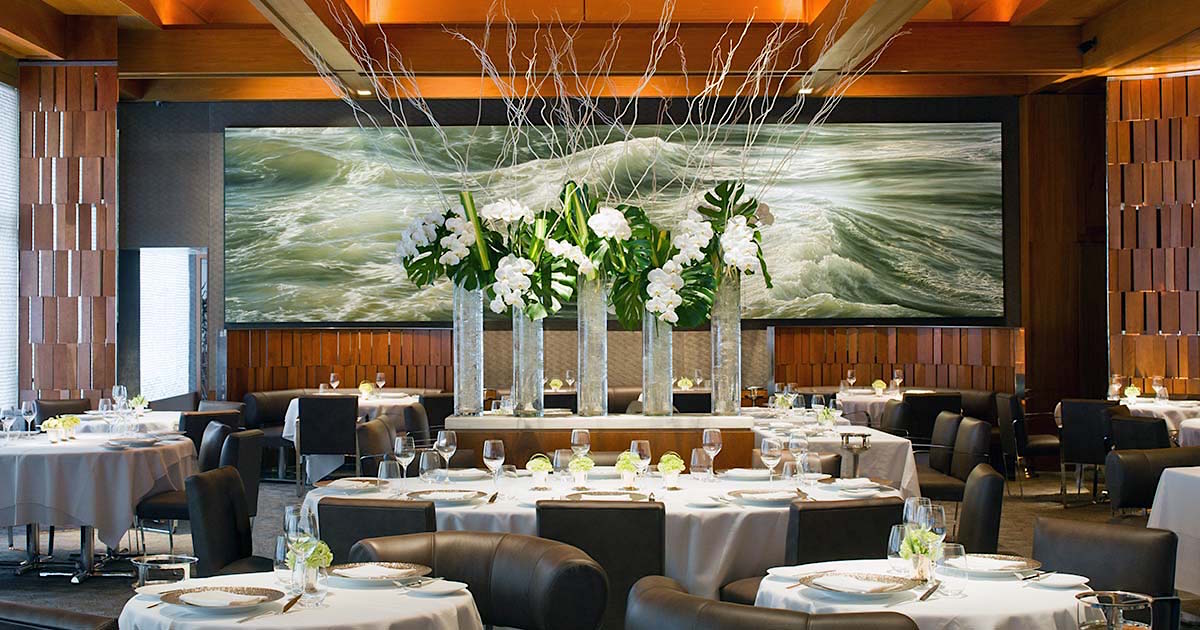 fish dishes outside of
sushi on menus. Vichyssoise was created by Chef
Louis Diat at the Ritz-Carlton.
fish dishes outside of
sushi on menus. Vichyssoise was created by Chef
Louis Diat at the Ritz-Carlton.
• Food
and restaurants critics began in NYC newspapers
and magazines, including Clementine Paddleford of
the Herald-Tribune
in the 1950s, Craig Claiborne in the 1960s, and
Mimi Sheraton of The Times
and Gael Greene of New York
Magazine in the 1970s.
• Though
born in Portland, OR (!), James Beard, the “dean
of American food writers” made his career and
reputation in NYC as of 1947.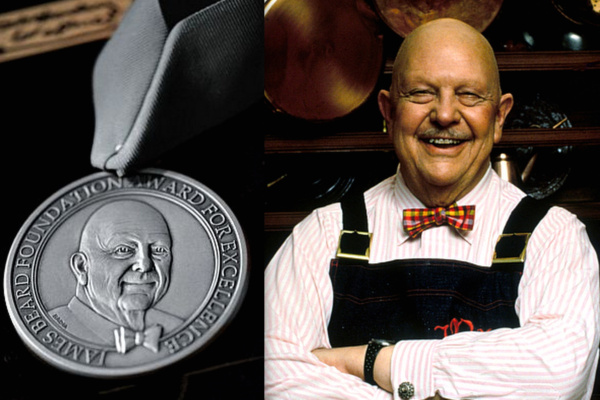
• The first molecular/modernist chef
in America was Wyle Dufresne of WD-50 restaurant
(now closed).
❖❖❖
CLIMBING BACK TO THE TOP
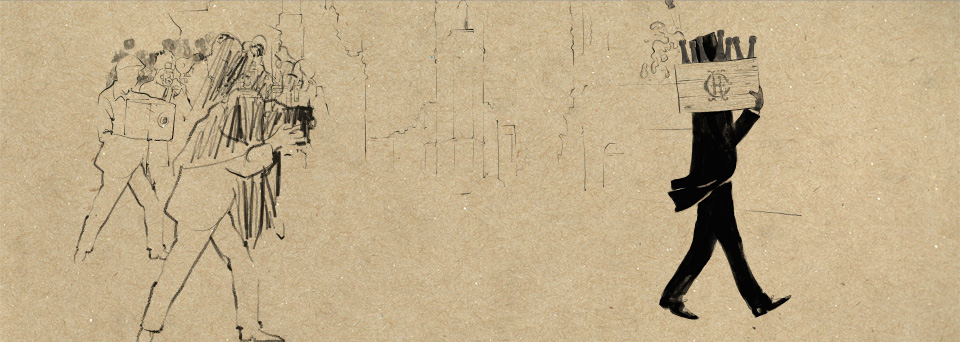
As difficult as it is
to believe but the illustrious house of Charles
Heidsieck Champagne had been allowed to flounder
over the last two decades. Indeed,
despite
its reputation as one of France’s finest, sales
had dropped 90 percent from 1990-2011, a fall
due more to neglect than to any decline in
quality.
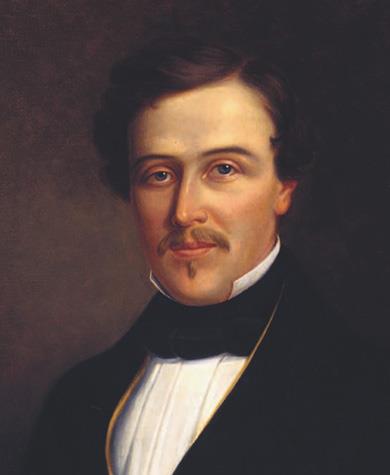 It
was fortuitous, then, that a new owner, Christopher
Descours, Chairman of EPI (Europeenne
de Participations Industrielles SAS), known for investing in
long-term growth of prestigious properties,
brought the Champagne company in 2011 and brought
in Chef des Caves Cyril Brun this past year,
formerly enologist for Veuve Cliquot Ponsardin, to
guarantee that the heritage of the Heidsieck
family’s style of Champagne be maintained. He also
appointed a new Executive Director, Stephen Leroux
(in 2013), most recently Director of Sales and
Marketing at Bollinger, to oversee a long-term
strategy to increase Charles Heidsieck’s market
share without compromising quality. The new
ownership and appointments are already showing
significant upward mobility in sales for the Grand
Marque.
It
was fortuitous, then, that a new owner, Christopher
Descours, Chairman of EPI (Europeenne
de Participations Industrielles SAS), known for investing in
long-term growth of prestigious properties,
brought the Champagne company in 2011 and brought
in Chef des Caves Cyril Brun this past year,
formerly enologist for Veuve Cliquot Ponsardin, to
guarantee that the heritage of the Heidsieck
family’s style of Champagne be maintained. He also
appointed a new Executive Director, Stephen Leroux
(in 2013), most recently Director of Sales and
Marketing at Bollinger, to oversee a long-term
strategy to increase Charles Heidsieck’s market
share without compromising quality. The new
ownership and appointments are already showing
significant upward mobility in sales for the Grand
Marque.
The House traces its history to 1851 when Charles
Heidsieck (left),
at the age of 29, founded the brand and was the
first to see a larger market for Champagne in the
U.S.—he earned the nickname “Champagne Charlie.”
For 125 years, through all the wars that raged in
France, his family carried on his legacy before
selling the brand to Remy Cointreau in the 1980s,
which led to a fallow period for the Grand Marque. Now,
EPI has already reversed the effects of that
neglect.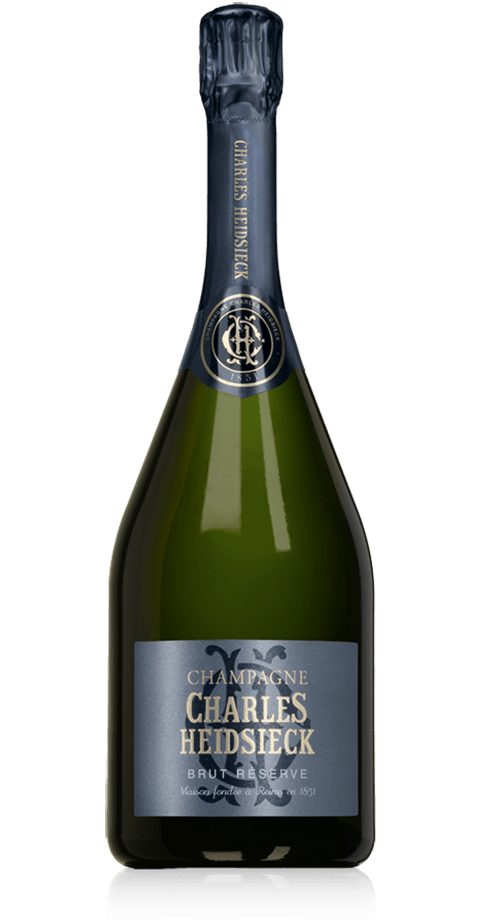
(Piper-Heidsieck is a wholly different Champagne
company, founded by Charles’ uncle Florens-Louis
Heidsieck, so there has long been confusion in
many consumers’ minds about the two names,
especially now that EPI owns both labels.)
I had dinner in NYC at Café Boulud with Stephen
Leroux earlier this month, and I sensed that
whatever heavy lifting he has to do, EPI has given
him the carte blanche and resources to do it. Leroux
is committed to the amount of travel to restore
old and make new connections necessary to bring
the name of the brand back to prominence. Eminence
has never been the problem.
I tasted several of Charles Heidsieck's
current releases over a three-course meal, where
everyone at the table choose different dishes, so
the point Champagne producers love to make—that
bubbly goes well with everything over the course
of a meal—was well taken, even if I was dying for
a glass of good red wine with a main course of
roast breast of pheasant. Still
with an array of other dishes that ranged from a
coddled egg with white truffle shavings to a cardamom-scented
kulfi
pistachio cake with pomegranate coulis,
the Champagnes showed to be beautify; match-ups.
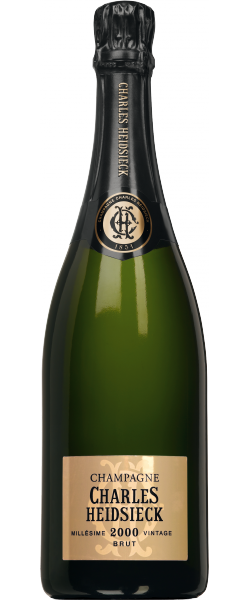 Remarkably,
the non-vintage Brut Réserve (right)
retails for just $65, which is a bargain for a
Champagne of such enchanting complexity and
sophistication.
The marque’s style has long been to blend
reserve wines (which can be 15 years old, with an
average of ten); the current non-vintage is 40
percent each of pinot noir and percent chardonnay,
and 20 percent pinot meunier, with one-third of
each new harvest representing 60 percent of the
total blend, so that there is both a heritage and
a stylistic consistency in each non-vintage
bottle.
Remarkably,
the non-vintage Brut Réserve (right)
retails for just $65, which is a bargain for a
Champagne of such enchanting complexity and
sophistication.
The marque’s style has long been to blend
reserve wines (which can be 15 years old, with an
average of ten); the current non-vintage is 40
percent each of pinot noir and percent chardonnay,
and 20 percent pinot meunier, with one-third of
each new harvest representing 60 percent of the
total blend, so that there is both a heritage and
a stylistic consistency in each non-vintage
bottle.
Charles Heidsieck 2006 Rosé Millèsime (left; $150),
just
released, comes from a vintage of very ripe fruit
and lower acidity, and again the three-wine blend
of 63 percent pinot noir, 37 percent chardonnay,
and 8 percent addition of red wines was aged for
more than seven years. It has marvelous body,
creamy, with just the right amount of sweet
undertones and ripe fruit.
The company’s promotional tasting notes for
Charles Heidsieck 1995 Blanc des Millenaires (below; $250)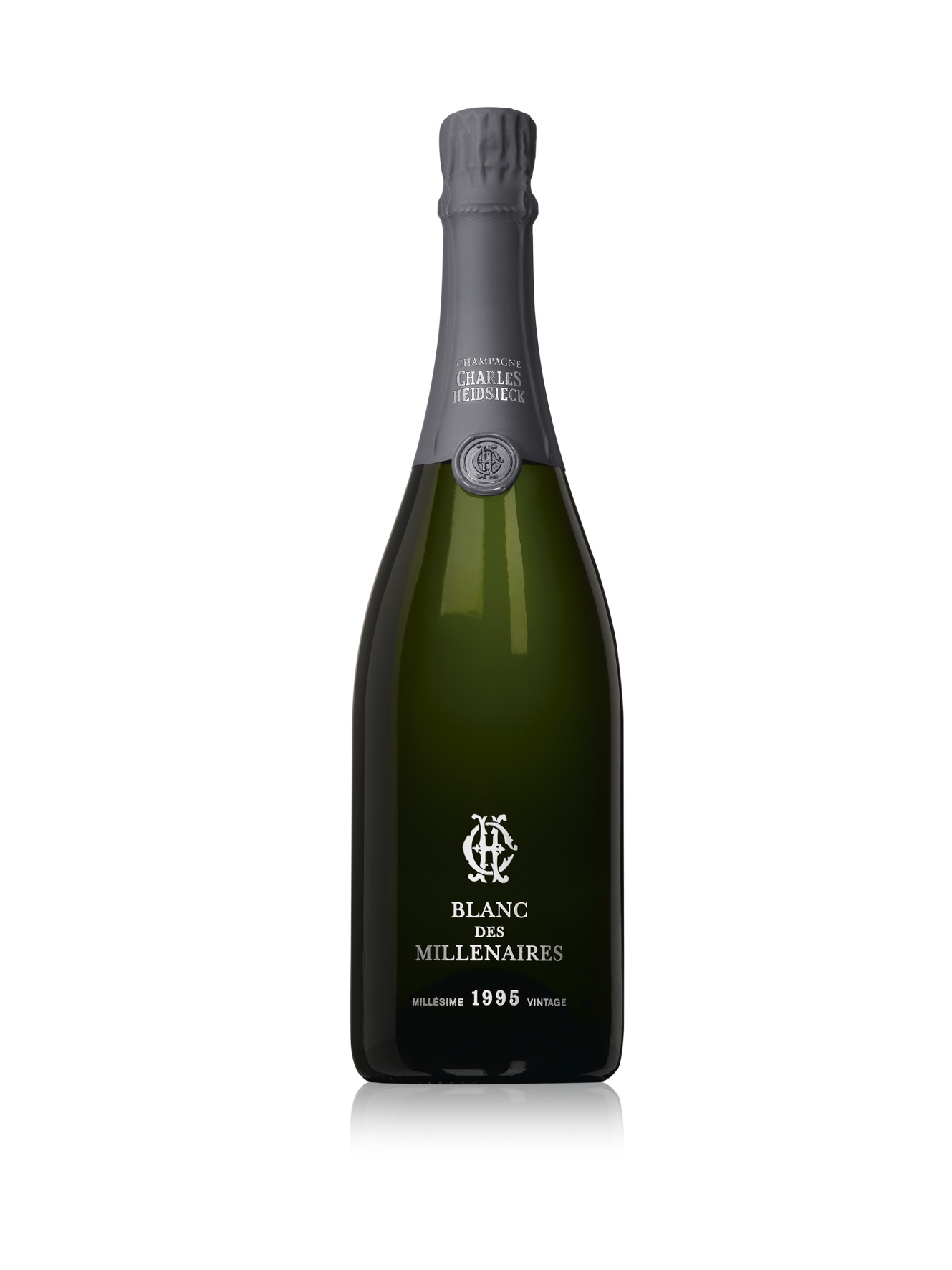 runs to purple prose—“A unique
emotion, the impression of eternity” and so
on—does nothing to detract from the serious
refinement of this superb vintage, which has spent
20 years maturing at the marque’s Gallo-Roman
chalk cellars in Reims that generate delicate
bubbles. The
wine is then disgorged and spends an additional
year of aging, as it acquires the finesse and
dimensions that distinguish a great vintage.
runs to purple prose—“A unique
emotion, the impression of eternity” and so
on—does nothing to detract from the serious
refinement of this superb vintage, which has spent
20 years maturing at the marque’s Gallo-Roman
chalk cellars in Reims that generate delicate
bubbles. The
wine is then disgorged and spends an additional
year of aging, as it acquires the finesse and
dimensions that distinguish a great vintage.
Anything
different at all, however, would be a betrayal of
the label’s claim to consistency, which is what
Brun and Leroux are promising those who have
always loved Charles Heidsieck, those who have not
tasted a bottle in years, and those for whom its
excellence will be a revelation.
❖❖❖
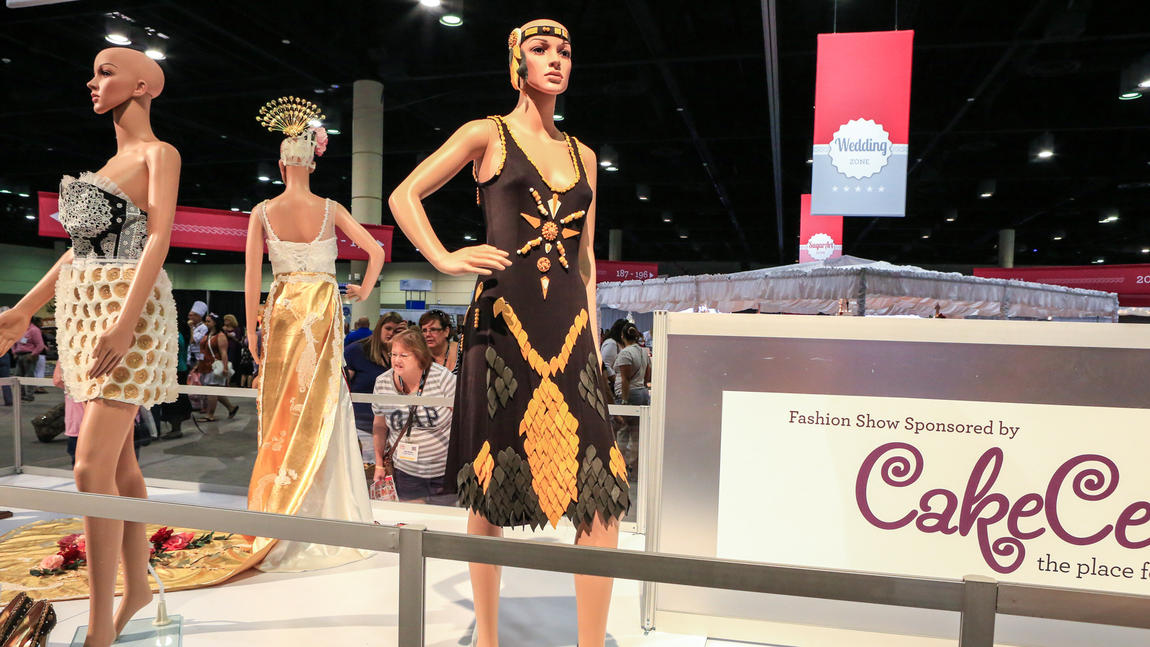 PAGING WILLY
WONKA!
PAGING WILLY
WONKA!
Pastry arts instructor Joe Humm at the Pennsylvania School of
Culinary Arts has crafted the chocolate
outfit for The
Americas Cake & Sugarcraft Fair in Orlando,
Florida, including a patterned short skirt, corset,
jewelry, and a hat made
entirely from chocolate, at least 60%
edible and the model can wear it for four
hours before the chocolate melts.
FOOD
WRITING 101: BLOCK THAT METAPHOR!
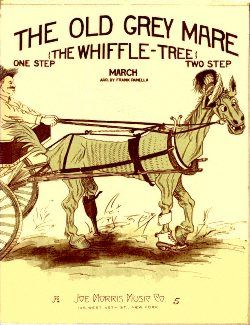
“Much of the menu lassos the grayest of old gray mares
and drags them out for one last trot around the paddock.
Some of the mares are revived by the exercise. Others,
like the chocolate mousse that has been repeatedly
violated by bits of baked cocoa meringue and buried
under chocolate ice cream, seem as if they would rather
be left alone to live out their retirements in
peace.”—Pete Wells, “At Vaucluse, Michael
White Takes a Step Toward France on the Upper East
Side,” NY Times
(12/2/15)
Any of John Mariani's books below may be ordered from amazon.com.
 I'm proud and happy to announce that my
new book, The Hound
in Heaven (21st Century Lion Books), has just
been published through Amazon and Kindle.
I'm proud and happy to announce that my
new book, The Hound
in Heaven (21st Century Lion Books), has just
been published through Amazon and Kindle. It is a novella, and for anyone who loves dogs, Christmas, romance, inspiration, even the supernatural, I hope you'll find this to be a treasured favorite. The story concerns how, after a New England teacher, his wife and their two daughters adopt a stray puppy found in their barn in northern Maine, their lives seem full of promise. But when tragedy strikes, their wonderful dog Lazarus and the spirit of Christmas are the only things that may bring back his master back from the edge of despair.
WATCH THE VIDEO!
“What a huge surprise turn this story took! I was completely stunned! I truly enjoyed this book and its message.” – Actress Ali MacGraw
“He had me at Page One. The amount of heart, human insight, soul searching, and deft literary strength that John Mariani pours into this airtight novella is vertigo-inducing. Perhaps ‘wow’ would be the best comment.” – James Dalessandro, author of Bohemian Heart and 1906.
“John Mariani’s Hound in Heaven starts with a well-painted portrayal of an American family, along with the requisite dog. A surprise event flips the action of the novel and captures us for a voyage leading to a hopeful and heart-warming message. A page turning, one sitting read, it’s the perfect antidote for the winter and promotion of holiday celebration.” – Ann Pearlman, author of The Christmas Cookie Club and A Gift for my Sister.
“John Mariani’s concise, achingly beautiful novella pulls a literary rabbit out of a hat – a mash-up of the cosmic and the intimate, the tragic and the heart-warming – a Christmas tale for all ages, and all faiths. Read it to your children, read it to yourself… but read it. Early and often. Highly recommended.” – Jay Bonansinga, New York Times bestselling author of Pinkerton’s War, The Sinking of The Eastland, and The Walking Dead: The Road To Woodbury.
“Amazing things happen when you open your heart to an animal. The Hound in Heaven delivers a powerful story of healing that is forged in the spiritual relationship between a man and his best friend. The book brings a message of hope that can enrich our images of family, love, and loss.” – Dr. Barbara Royal, author of The Royal Treatment.
 |
The Encyclopedia of American Food and Drink by John F. Mariani (Bloomsbury USA, $35) Modesty forbids me to praise my own new book, but let me proudly say that it is an extensive revision of the 4th edition that appeared more than a decade ago, before locavores, molecular cuisine, modernist cuisine, the Food Network and so much more, now included. Word origins have been completely updated, as have per capita consumption and production stats. Most important, for the first time since publication in the 1980s, the book includes more than 100 biographies of Americans who have changed the way we cook, eat and drink -- from Fannie Farmer and Julia Child to Robert Mondavi and Thomas Keller. "This book is amazing! It has entries for everything from `abalone' to `zwieback,' plus more than 500 recipes for classic American dishes and drinks."--Devra First, The Boston Globe. "Much needed in any kitchen library."--Bon Appetit. |
"Eating Italian will never be the same after reading John Mariani's entertaining and savory gastronomical history of the cuisine of Italy and how it won over appetites worldwide. . . . This book is such a tasteful narrative that it will literally make you hungry for Italian food and arouse your appetite for gastronomical history."--Don Oldenburg, USA Today. "Italian
restaurants--some good, some glitzy--far
outnumber their French rivals. Many of
these establishments are zestfully described
in How Italian Food Conquered the World, an
entertaining and fact-filled chronicle by
food-and-wine correspondent John F.
Mariani."--Aram Bakshian Jr., Wall Street
Journal.
"Equal parts
history, sociology, gastronomy, and just
plain fun, How Italian Food Conquered the
World tells the captivating and delicious
story of the (let's face it) everybody's
favorite cuisine with clarity, verve and
more than one surprise."--Colman Andrews,
editorial director of The Daily
Meal.com. "A fantastic and fascinating
read, covering everything from the influence
of Venice's spice trade to the impact of
Italian immigrants in America and the
evolution of alta cucina. This book will
serve as a terrific resource to anyone
interested in the real story of Italian
food."--Mary Ann Esposito, host of PBS-TV's
Ciao
Italia. "John Mariani has written the
definitive history of how Italians won their
way into our hearts, minds, and
stomachs. It's a story of pleasure over
pomp and taste over technique."--Danny Meyer,
owner of NYC restaurants Union Square
Cafe, The Modern, and Maialino.
|
 |
 |
 |
 |
 |
 |
 |
 |
 Everett Potter's Travel Report:
Everett Potter's Travel Report: 
 Eating Las
Vegas is the new on-line site for
Virtual Gourmet contributor John A. Curtas.,
who since 1995 has been commenting on the
Las Vegas food scene and reviewing
restaurants for Nevada Public Radio.
He is also the restaurant critic for KLAS
TV, Channel 8 in Las Vegas, and his past
reviews can be accessed at KNPR.org.
Click on the logo below to go directly to
his site.
Eating Las
Vegas is the new on-line site for
Virtual Gourmet contributor John A. Curtas.,
who since 1995 has been commenting on the
Las Vegas food scene and reviewing
restaurants for Nevada Public Radio.
He is also the restaurant critic for KLAS
TV, Channel 8 in Las Vegas, and his past
reviews can be accessed at KNPR.org.
Click on the logo below to go directly to
his site.

Tennis Resorts Online: A Critical Guide to the World's Best Tennis Resorts and Tennis Camps, published by ROGER COX, who has spent more than two decades writing about tennis travel, including a 17-year stretch for Tennis magazine. He has also written for Arthur Frommer's Budget Travel, New York Magazine, Travel & Leisure, Esquire, Money, USTA Magazine, Men's Journal, and The Robb Report. He has authored two books-The World's Best Tennis Vacations (Stephen Greene Press/Viking Penguin, 1990) and The Best Places to Stay in the Rockies (Houghton Mifflin, 1992 & 1994), and the Melbourne (Australia) chapter to the Wall Street Journal Business Guide to Cities of the Pacific Rim (Fodor's Travel Guides, 1991).


MARIANI'S VIRTUAL GOURMET
NEWSLETTER is published weekly. Editor/Publisher: John
Mariani.
Editor: Walter Bagley. Contributing Writers: Christopher Mariani,
Robert Mariani, Misha
Mariani,
John A. Curtas, Edward Brivio, Mort Hochstein,
Andrew Chalk, Dotty Griffith and Brian Freedman. Contributing
Photographers: Galina Dargery, Bobby
Pirillo. Technical Advisor: Gerry McLoughlin.
To un-subscribe from this newsletter,click here.
© copyright John Mariani 2015

